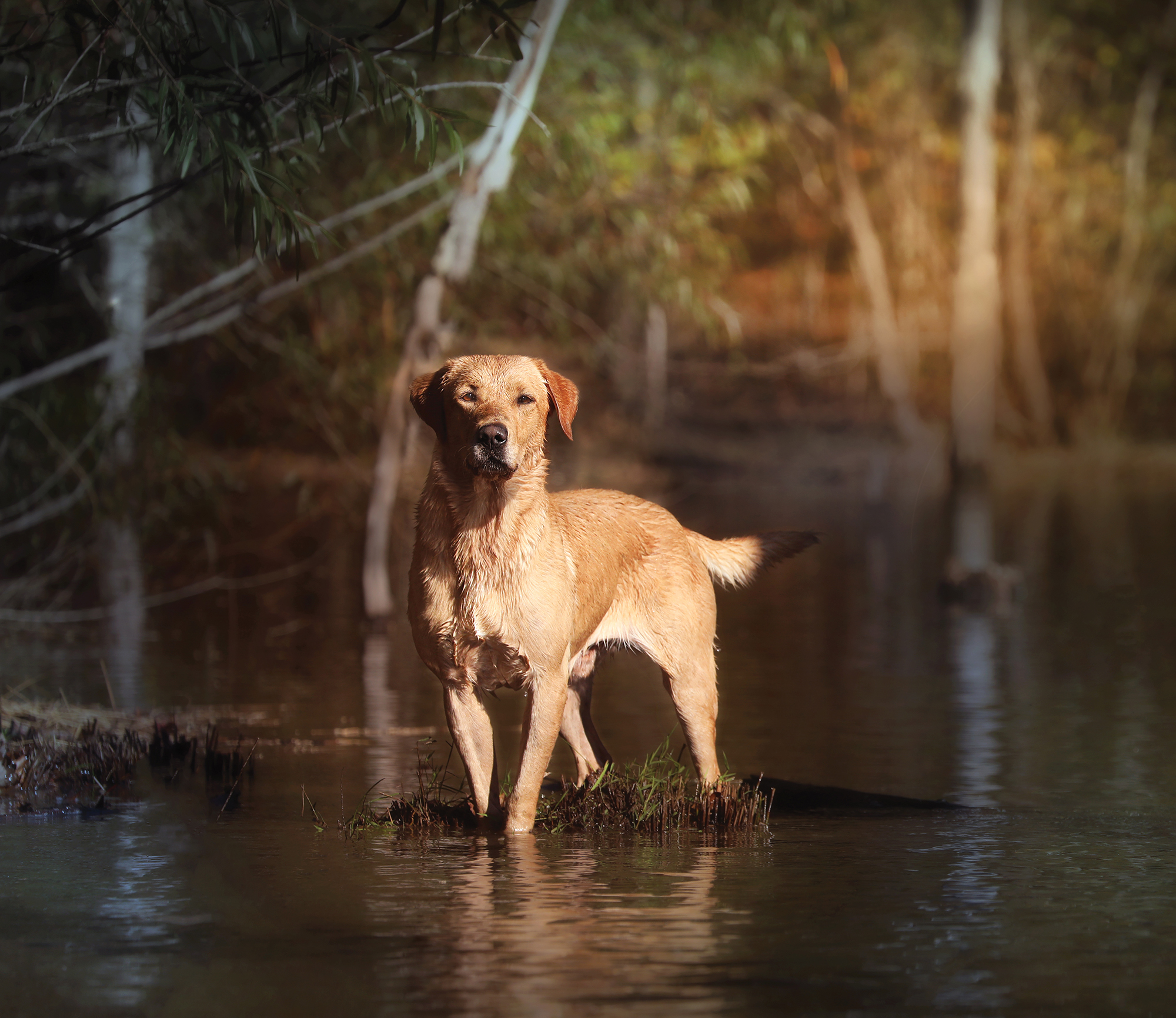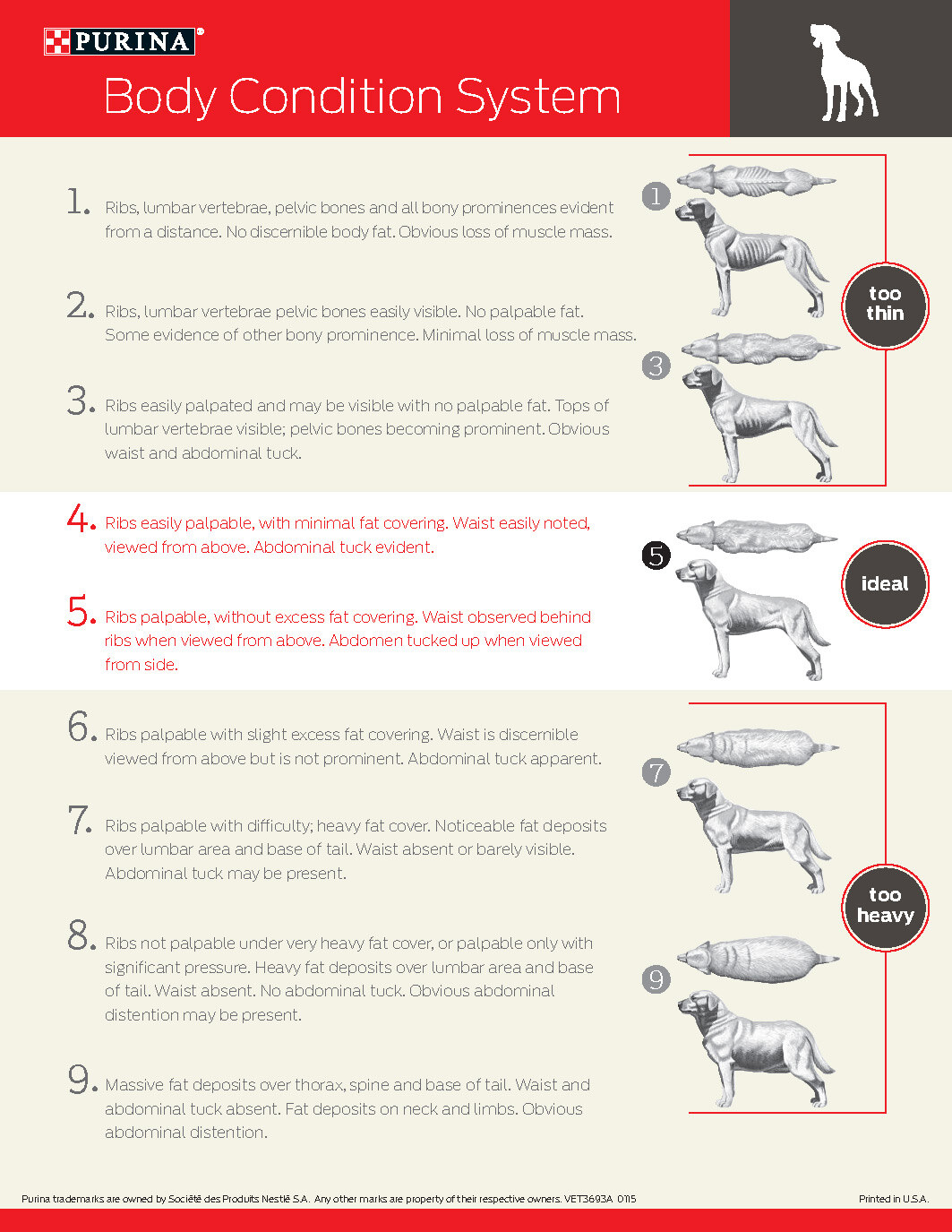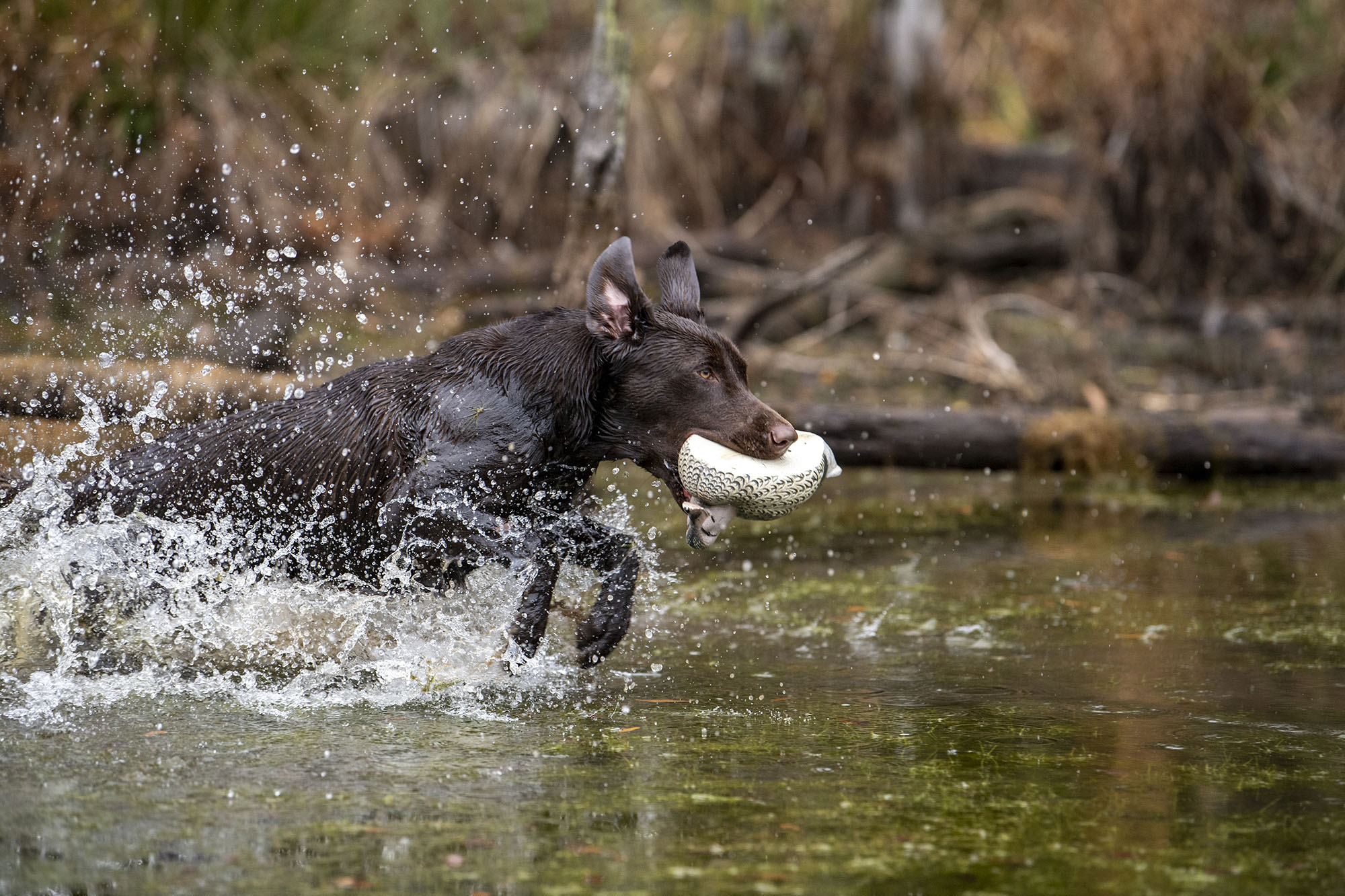Sporting dogs work hard running marathon distances over rough, inhospitable terrain or swimming in icy waters repeatedly over the course of an all-day sit in the duck blind. Physical conditioning and mental acuity gained from training will help your most loyal hunting companion perform well in the field but feeding her properly can maximize performance and help her avoid injury.
Fueling your working dog requires more than just throwing kibble in the bowl. To properly feed the canine athlete, you have to consider the formula you’re using, how much to feed and when. Doing so will allow your dog to perform at her best.
Feed the Appropriate Formula
There are a ton of formulas out there that you can feed a dog. But for hard-working sporting dogs, a premium formula is best. The higher fat and protein levels fuel the canine athlete’s overall nutritional needs, energy requirements, metabolism and repair of muscles, tendons and ligaments.
A formula with 30-percent protein and 20-percent fat is, and has been, the standard for the ultimate canine athlete. If you hunted hard, or really at all, it was the recommended recipe to feed. However, advancements in dog food give owners flexibility to meet the needs of their dog’s energy use and body condition.
“You need to match the food to the activity level of your dog and participation frequency,” said Dr. Brian Zanghi, a Senior Research Nutritionist at Purina. “The 30/20 is great for the hardcore dog that is training, working or hunting every day, but it might be too much for the weekend warrior. For those dogs who are active but only in the field or training a couple times a month, a lower level of fat and protein might be better.”
If your dog is active but not going hard every day, consider a 27/17 or 26/16 protein-to-fat ratio. This allows you to feed your dog more without the threat of weight gain, which can lead to injuries and other issues. If you want to feed a 30/20 formula to a less active dog, monitor their body condition and adjust the proportions based on activity level to maintain a healthy state.

Feed to Ideal Body Condition
Overweight or underweight dogs won’t perform optimally in the field and, in the case of overweight dogs, run an increased risk of injury. Feeding your dog to an ideal body weight can add years to their life.
The ideal body condition isn’t a static metric. It will fluctuate over time and throughout the year for a working dog. When the dog is training or hunting hard, it will require more calories in the form of either more food or a more calorically dense formula that contains more protein and fat.
Measured feeding vs free feeding allows you to control how much your dog consumes and makes it easier to keep him in an ideal weight and body condition range. If he’s free feeding, you have no way to monitor how much he’s eating, or when, and issues that might arise, such as sudden weight loss or gain. With measured feeding you know if your dog is consuming his food or not and can take appropriate steps to increase or reduce the amount, change formulas or other steps.
“You want to keep the working dog on a performance food all year round, but when they’re not working, feed less,” said Dr. Zanghi. “Feed to an ideal body condition, which isn’t just reflective of weight. You can use the Purina Body Condition Score or check with your vet.”

Feed at the Proper Time
Running for miles in the uplands or chasing raccoons through the forest is hard work. Doing it on a full gut can hinder your dog’s performance and sometimes even result in temporarily having bloody stool due to material shaking in the large intestine of the digestive track during intense exercise.
Feeding once per day after exercise gives your dog time to digest the food before exercising the next day. “It’s still best to feed once a day, in the evening, after the dog has cooled down. Provide fresh water so they can rehydrate, and when their panting slows to normal, then feed them,” said Dr. Zanghi. “That allows them enough time for digestion and absorption of nutrients to help nourish recovering muscles and to replenish overall energy stores.”
Nutrition studies have revealed that a dog’s endurance performance can be as much as doubled when on an empty stomach compared to having eaten four or less hours before exercising. There is also scientific evidence from dog nutrition studies that feeding 17 or more hours before exercise results in a much greater use of fat as energy; this is compared to feeding six hours before exercise, which results in a much greater use of carbohydrates for energy generation.
Exercise metabolism for a hardworking dog is best when fat is used for producing energy for muscles. This is because fat is the best energy source for promoting and supporting endurance exercise, which is exactly what most hardworking dogs require for optimal performance.
When your season is only a couple of months long, it’s incumbent upon you to provide the best nutrition and feeding regimen for your dog. After all, without your dog, the hunt is never the same. It’s your duty to feed the best performance formula for his activity level, to take the time to measure, monitor and adjust amounts accordingly and to feed at the best time. Doing so will pay dividends for you and, especially, your dog this season.
